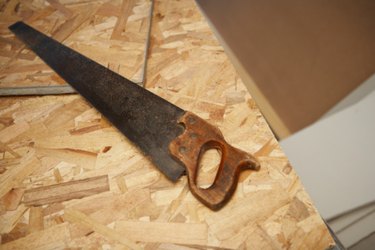Things You'll Need
Rags
Fans
Space heater (optional)

Leaving a pile of constructed wood products uncovered in a rainstorm can severely affect the timetable of a building job. A leak can dampen household plywood and increase the risk of mold. Both plywood and its constructed wood brother, oriented strandboard, suffer from degraded structural performance and fungal infestation when they are exposed to overly wet conditions. Moist conditions causes plywood to soften and bend. The risk of warping increases and the rate of moisture evaporation decreases if damp plywood is left untreated. If possible, dry plywood to firm it back up and reduce the risk of fungus.
Step 1
Stop the source of the water before attempting to dry the plywood. Bring rained-on plywood indoors, or stop the leak that dampened structural plywood in your home.
Video of the Day
Step 2
Wipe down the plywood with clean rags to soak up as much as the surface moisture as possible.
Step 3
Point several high-powered fans at the plywood to dry it out. Stand the plywood to let the air flow hit as much plywood surface area as possible.
Step 4
Place a space heater behind the fans to speed up the drying process, if desired. Situating freestanding plywood and fans close to a furnace works as well. However, the Engineered Wood Association warns that plywood that is dried too quickly can suffer from raised surface grains, which lessens the visual appeal of the panel.
Step 5
Keep the fans blowing until the plywood dries. Expect a freestanding sheet of plywood close to a heat source to dry in a few days, while a piece of plywood composing the structure of a house can take up to a month to dry.
Video of the Day